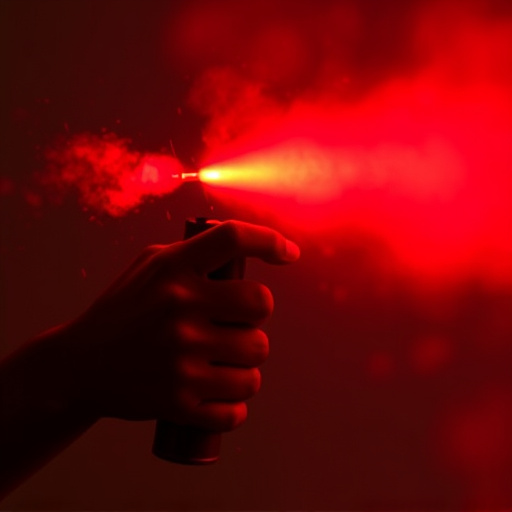Understanding pepper spray dynamics is crucial for effective and safe deployment as a self-defense tool. Key factors include active ingredients, delivery methods (aerosol canisters, chemical pencils, personal alarms) tailored to individual needs and situations. Best practices for storage, handling, and use ensure safety and efficacy. Optimal use involves understanding and practicing best delivery methods for close encounters and longer distances, emphasizing responsible self-defense through technique refinement with trained professionals.
“Staying safe while utilizing pepper spray as a self-defense tool is paramount. This comprehensive guide explores the dynamics of pepper spray, delving into its active ingredients and effectiveness. We’ll dissect best practices for storage and handling, ensuring your safety isn’t compromised. Moreover, we’ll uncover the art of optimal protection through effective delivery methods—learning the ideal spraying angles and distances. By mastering these techniques, you’ll enhance your ability to defend yourself with pepper spray, making it a powerful and safe tool in the right hands.”
- Understanding Pepper Spray Dynamics: Active Ingredients & Efficacy
- Best Practices for Safe Storage and Handling Techniques
- Effective Delivery Methods: Spraying Angles & Distances for Optimal Protection
Understanding Pepper Spray Dynamics: Active Ingredients & Efficacy
Understanding Pepper spray dynamics is crucial for its effective and safe use as a self-defense weapon. The primary active ingredients in pepper spray are capsaicin, oleoresin capsicum (OC), or a combination of both. These compounds are derived from chili peppers and stimulate nerve endings in the eyes, nose, and respiratory system, causing intense irritation, temporary blindness, and difficulty breathing.
The efficacy of pepper spray depends on the delivery method. Best Pepper Spray Delivery Methods include aerosol canisters, chemical pencils, and personal alarms. Aerosol cans provide a wide range of coverage, making them ideal for outdoor use or situations where an attacker is at close quarters. Chemical pencils are compact and easy to conceal, suitable for tactical situations or when carrying a lightweight option. Personal alarms, though not directly sprayed, emit a strong aerosol burst upon activation, offering a surprise element that can disrupt an attack and provide time for escape.
Best Practices for Safe Storage and Handling Techniques
When it comes to pepper spray self-defense, proper storage and handling are paramount for safety and effectiveness. Keep your pepper spray out of reach of children and unauthorized individuals by storing it in a secure, locked container, preferably high up and away from the ground. Ideal locations include a nightstand drawer or a locked cabinet. Ensure the area is cool and dry to prevent any damage to the device.
For safe handling, always read and follow the manufacturer’s instructions. Use protective gloves when accessing the spray, especially in situations where you might be handling used or contaminated devices. Avoid direct contact with your eyes, skin, or clothing after use, and wash thoroughly afterward. Store the pepper spray in its original packaging to ensure easy access to safety information and usage guidelines, which are crucial for responsible self-defense.
Effective Delivery Methods: Spraying Angles & Distances for Optimal Protection
When it comes to using pepper spray for self-defense, understanding the best delivery methods is crucial for optimal protection. The key lies in spraying at angles and distances that maximize impact while ensuring safety. For close encounters, a direct spray into the face or eyes of an aggressor can quickly disable them, allowing you to escape. Aiming for the center mass—the nose, mouth, and throat area—is effective as these openings are closely connected to vital organs.
At slightly greater distances, aiming for the chest and shoulders provides good coverage. This technique allows you to disrupt balance without directly targeting sensitive areas. Remember, the ideal distance varies based on factors like spray type, wind conditions, and target size. Practicing with a trained professional can help you refine your technique, ensuring you use pepper spray effectively and responsibly in real-life situations.
Equipped with knowledge about pepper spray dynamics, safe storage practices, and effective delivery methods, you’re now better prepared to choose and utilize this powerful self-defense tool responsibly. By understanding the active ingredients, practicing proper handling, and mastering spraying techniques like optimal angles and distances, you can enhance your personal safety effectively. Remember, awareness and preparation are key; always stay vigilant and keep yourself informed about best practices for pepper spray self-defense.
